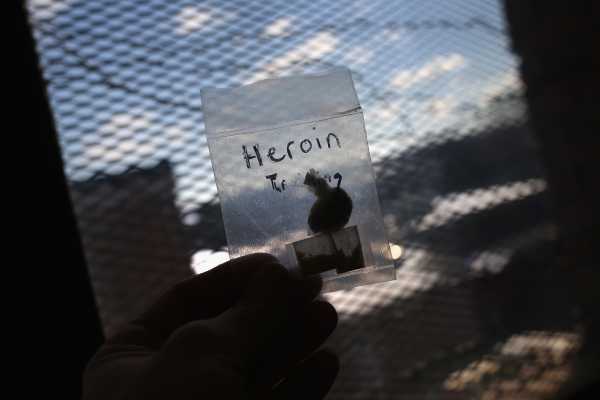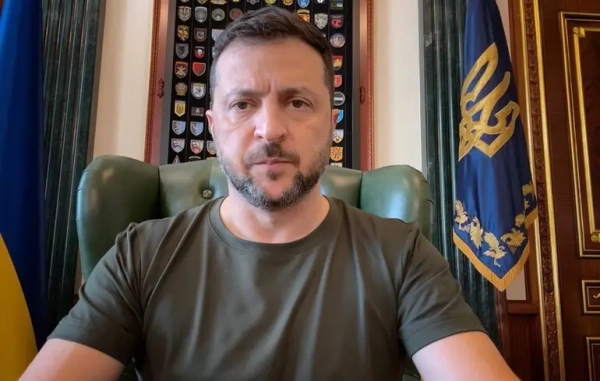
If you hear members of Congress tell it, this is really the moment that federal lawmakers are taking the opioid epidemic seriously. Over the next two days, the House is holding hearings on more than 20 bills to confront the opioid crisis — which Rep. Greg Walden (R-OR), who’s overseeing the hearings, described as “really digging in so we can deliver relief for those devastated by this crisis.”
The bills, based on what experts have told me, seem to be generally positive — taking a mostly public health approach to addressing the opioid crisis. They’re very varied: Some aim to improve access to treatment, including highly effective medications for opioid addiction such as methadone and buprenorphine. Others push federal agencies to better regulate opioid painkillers and seek out non-opioid alternatives to pain treatment. Several try to improve education and awareness of opioid-related problems. (You can see a full list of the House bills here.)
But while there are quite a few bills in play, advocates and experts aren’t convinced this is good enough. It’s not that the bills are bad; it’s that they take a scattershot approach that nibbles at the issue around the margins — and misses problems that a more comprehensive strategy or package of bills could fully address.
“Many of these policies seem to be tinkering around the edges,” Dr. Leana Wen, the health commissioner of Baltimore, told me. “It’s not that they’re not helpful in some way,” she added. But what officials on the ground feel that they need is “sustained, specific funding” and bolder, more sweeping guidance that will help build up long-term solutions.
For example, one of the more promising measures that the House is considering would help hospitals set up discharge protocols for patients who come in after an opioid overdose — to help connect such patients with addiction treatment and other services as they’re let out of the hospital.
But one of the key problems in the US is that there often aren’t treatment options available. That’s one of the major reasons, according to the surgeon general’s 2016 addiction report, that only 10 percent of Americans with a substance use disorder get specialty treatment. So even if a hospital technically has protocols in place to refer someone to treatment, there just might not be treatment — and particularly evidence-based treatment — to connect that patient to.
To address the root concern here, local and state jurisdictions simply need more funding — to build up and maintain treatment. G. Caleb Alexander, co-director of the Johns Hopkins Center for Drug Safety and Effectiveness, told me that the funding problem is the “elephant in the room.” As he put it, “Without money behind them, the bills aren’t going to do a whole lot.”
Congress has approved some money in recent years to address the opioid crisis. The 21st Century Cures Act, passed in 2016, added $1 billion over two years. The recent budget deal promised another $6 billion over two years.
While this might seem like a lot of money, it simply isn’t enough to deal with a crisis as big as the opioid epidemic. Experts, in fact, estimate that addressing the epidemic will require tens of billions of dollars each year — and, as importantly, the money has to be allocated in the long-term so officials on the ground have assurances that, say, the clinic they launch will be able to stay open years down the line.
It’s not yet clear where all of the House’s bills will end up. The Senate is working on its own separate measures, including a recently released bipartisan bill that commits an additional $1 billion. The currently in-the-works budget could also roll in some or all of these ideas as it allocates $6 billion to address the opioid crisis. More funds could be put forward in another package. All of this may be worked out if Congress moves closer to a final package of bills.
But as the opioid crisis continues and the death toll grows by the tens of thousands each year, experts and advocates are pushing for a more serious, comprehensive approach. And while they’re happy to see Congress discussing some proposals, they’re simply not enough yet.
The opioid epidemic demands big, sustained funding
It’s difficult to overstate the scope of the opioid crisis, which is now the deadliest drug overdose epidemic in US history. Nearly 64,000 people died of drug overdoses in the US in 2016, and at least two-thirds of those deaths were linked to opioids such as fentanyl, heroin, and prescribed painkillers. The total drug overdose deaths were higher than the number of deaths linked to guns, car crashes, or HIV/AIDS during any single year in America. Based on preliminary data from the Centers for Disease Control and Prevention (CDC), 2017 was even worse.
This, advocates say, requires a massive solution. To put it in context, the New York Times recently asked 30 experts how they would spend $100 billion over five years to address the epidemic — a number comparable to how much the US spends domestically on HIV/AIDS. That sounds like a lot of money, but some experts cautioned that even that amount of cash may not be enough.
That’s in large part because a lot of America’s addiction treatment infrastructure is in a very bad spot. Consider: Medications like methadone and buprenorphine are widely considered the gold standard of opioid addiction care, with studies showing that they reduce all-cause mortality among opioid addiction patients by half or more and do a far better job keeping people in treatment than non-medication approaches. Yet federal data suggests that even when an addiction treatment clinic is available, fewer than half of facilities offer any of these opioid addiction medications as an option.
In Baltimore, Wen sees other problems. She has garnered national media attention for her efforts to improve access to naloxone, a drug that reverses opioid overdoses. But as much as she’s tried to make naloxone — also known by its brand name, Narcan — accessible, she told me that she still needs to ration the limited supplies of the drug she has in her day-to-day work.
“It’s not that there’s a shortage of production,” Wen said. “We just don’t have the resources to purchase enough Narcan at the price that it’s offered at.”
The federal government could alleviate these kinds of problems. It could fund more clinics that provide medications for opioid addiction. It could send more money to cities like Baltimore so they can afford more naloxone.
Crucially, experts argue that this needs to be a long-term commitment — not just the one-off bills that Congress has been doing so far. One of the major complaints states have made so far with Cures Act funding, for example, is that there’s no guarantee the cash will be there a year or so later. That’s a problem: It’s going to be harder to justify building a clinic if you don’t know if you’ll be able to keep it open the next year.
“I used to work in the local level, and sometimes we wouldn’t even ask for federal grant funding because we had no way of funding these programs after a year or two,” Regina LaBelle, who served in the White House Office of National Drug Control Policy during the Obama years, told me. “That’s a serious concern for states that have limited budgets.”
Congress needs to go bold
It goes beyond money too. While the congressional bills make some smart changes, some experts argue that the reforms are simply not bold, sweeping, or comprehensive enough.
Wen drew a comparison to past disease scares, such as Ebola and Zika. These crises led hospitals and doctors, with government support, to retrain and restructure so they were properly built to handle any patients that came in with potential problems related to these diseases.
“We are now dealing with an epidemic of opioid overdose and addiction,” Wen said. “Why shouldn’t we require all doctors and all hospital systems to treat the disease of addiction?”
For example, hospital systems could require that a certain percentage of doctors are trained to prescribe buprenorphine. Methadone treatment could be provided on-site or nearby. Every opioid painkiller prescription could be paired with a naloxone prescription.
There are also comprehensive models that states could adopt, such as Vermont’s hub and spoke system, to really integrate addiction treatment into the rest of health care.
This goes much further than setting up discharge protocols for opioid overdose patients. It’s about fundamentally changing how health care systems work to mitigate the risk of opioid overdose and addiction at every level and ensure patients have readily available care options — just as we expect patients to be able to go to a hospital and quickly get full care if they have, say, problems with diabetes or heart disease.
These kinds of changes would be a lot easier to enact with federal support and guidance.
As experts have long told me, there is no silver bullet to the opioid epidemic, but there’s a mix of policies that would help: more treatment (particularly medications like methadone and buprenorphine), more harm reduction (such as better access to naloxone), fewer painkiller prescriptions (while ensuring the drugs are available to those who really need them), and policies that can help address the root cause of addiction (like mental health issues and socioeconomic despair).
Implementing all of these ideas, however, will require significant, sustained funding and fundamental changes in how the country approaches health care. To accomplish that, Congress needs a broader plan — a strategy that it can gear bills toward, instead of the current scattershot approach it’s taking.
“There’s no strategy here,” LaBelle said, noting that this is an area in which some leadership from the White House would help. “These can be hard things to do. You need to start with a plan.”
Once Congress starts talking about a broader, more comprehensive strategy, advocates and experts will be more convinced that it’s taking this issue seriously. Until then, Congress is, as Wen put it, just tinkering.
Sourse: vox.com






